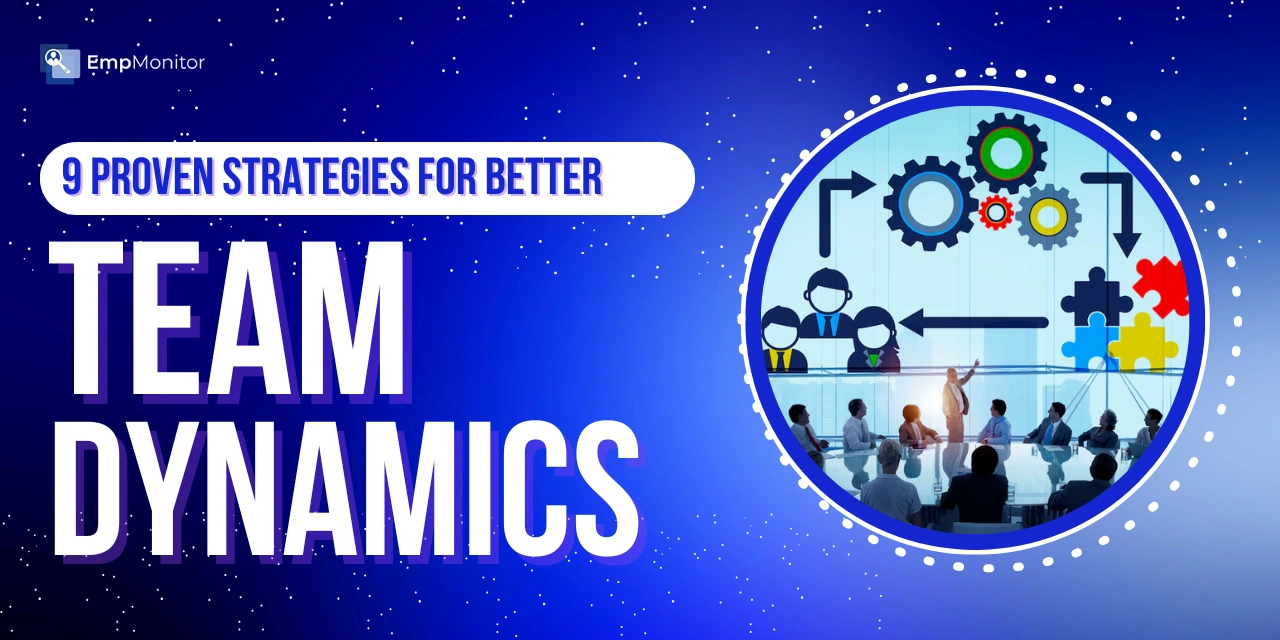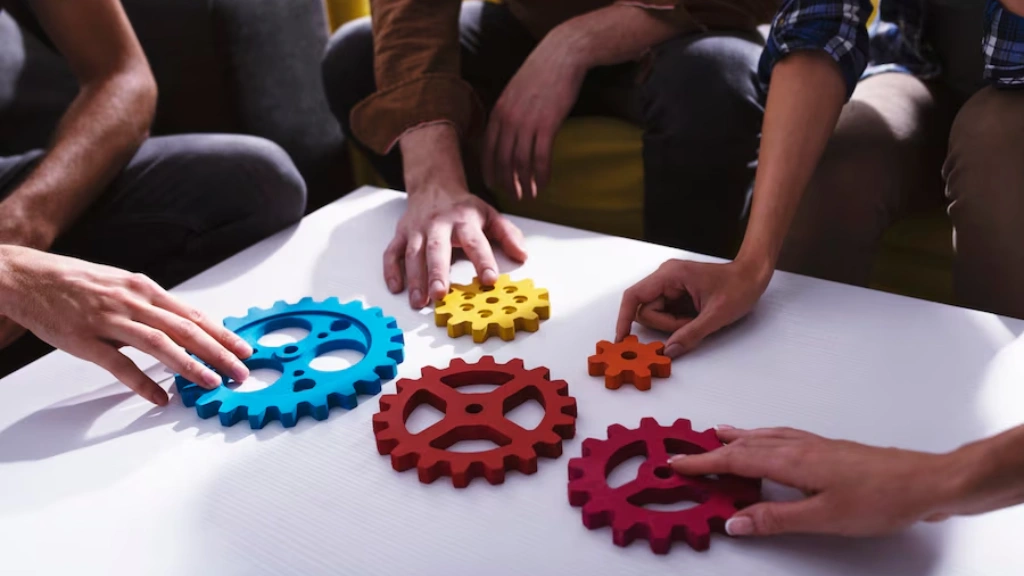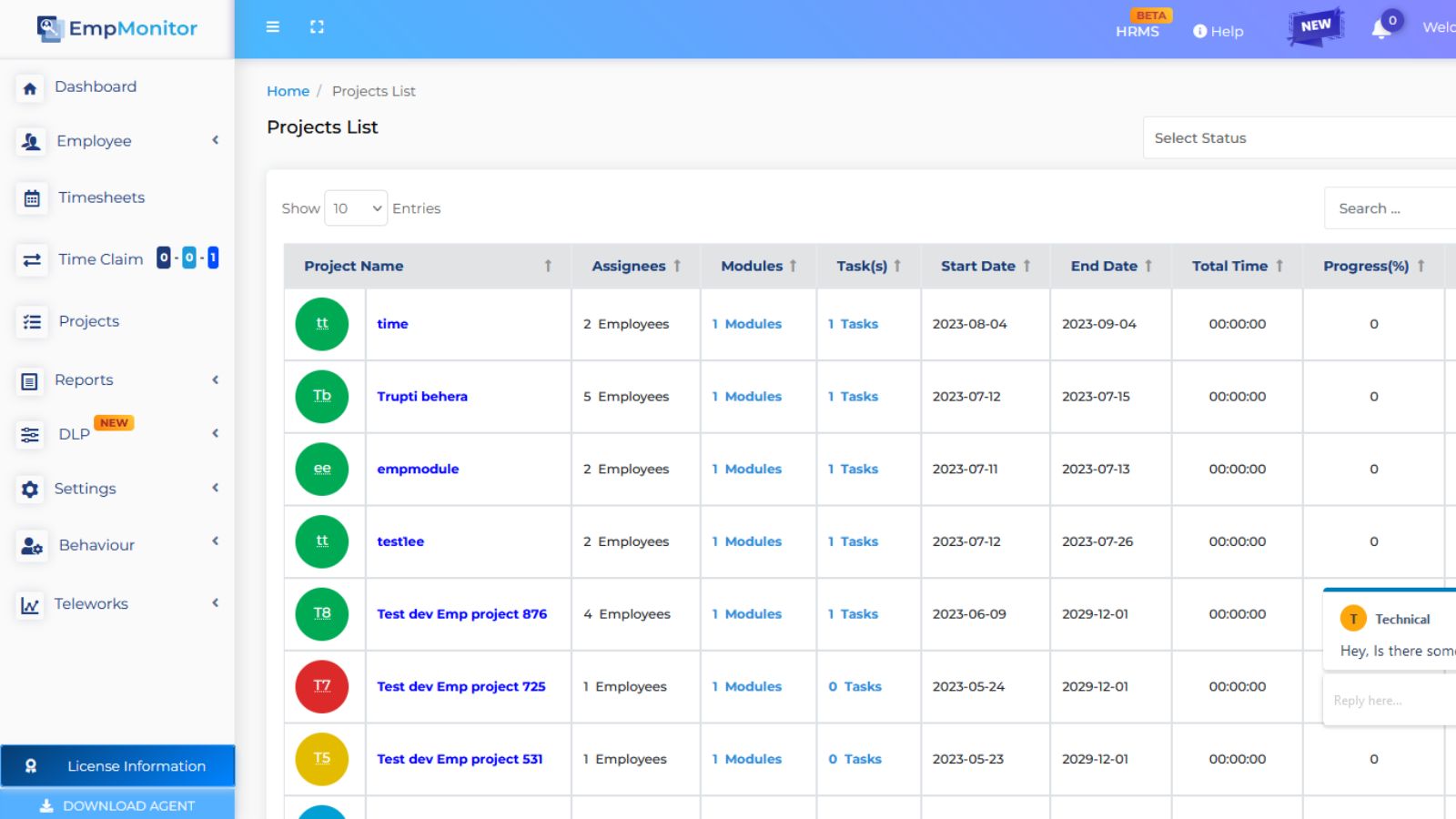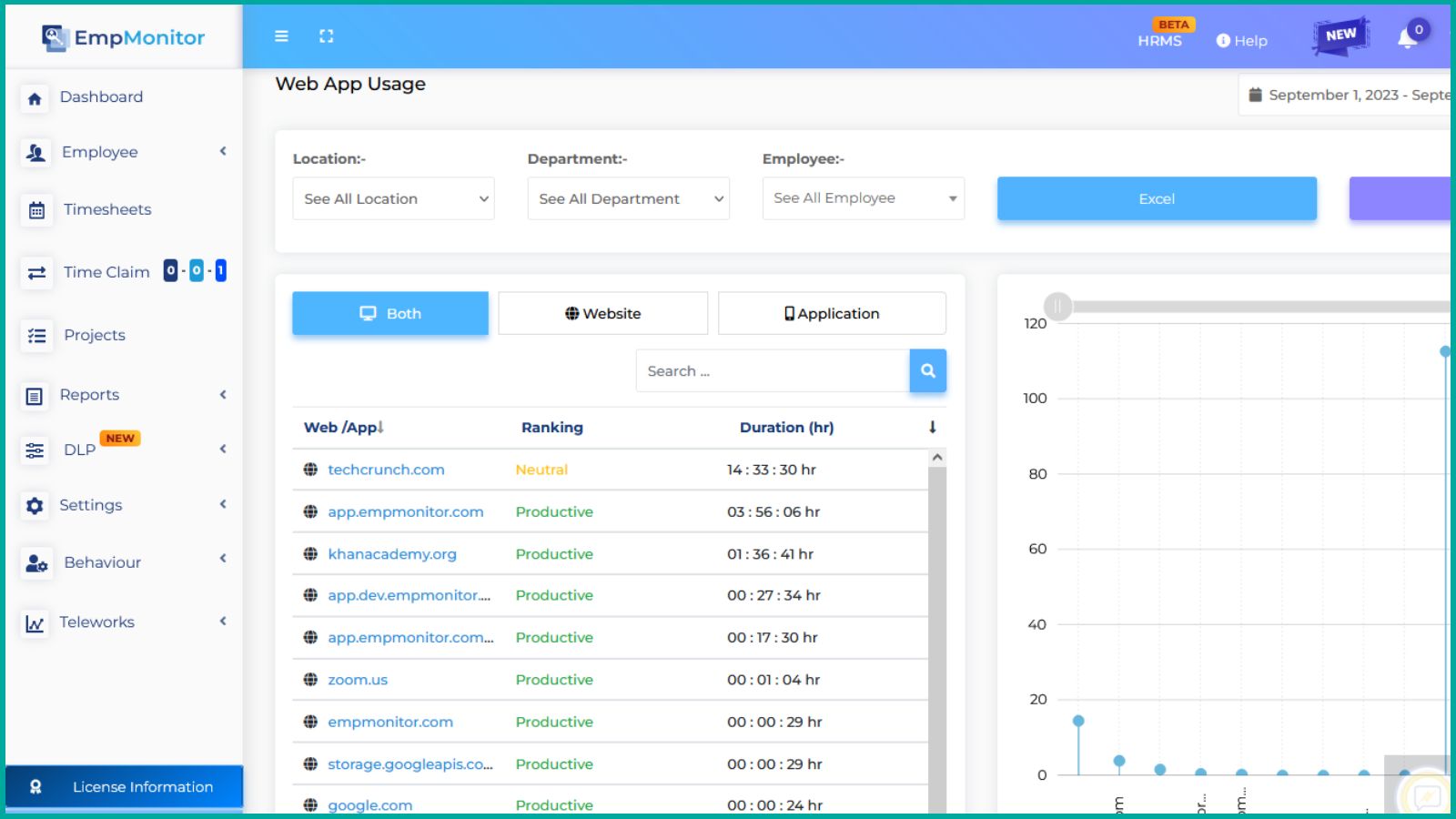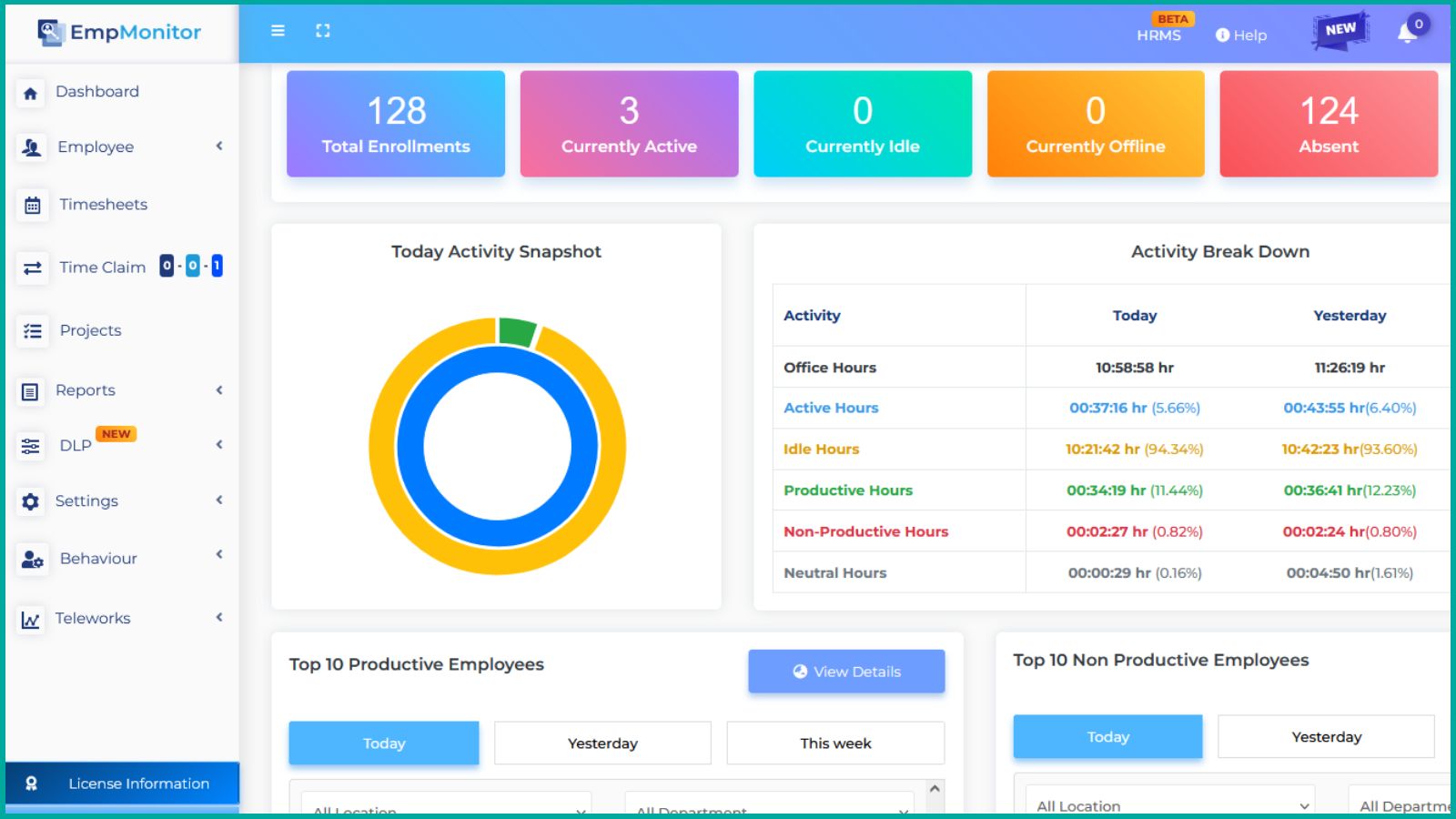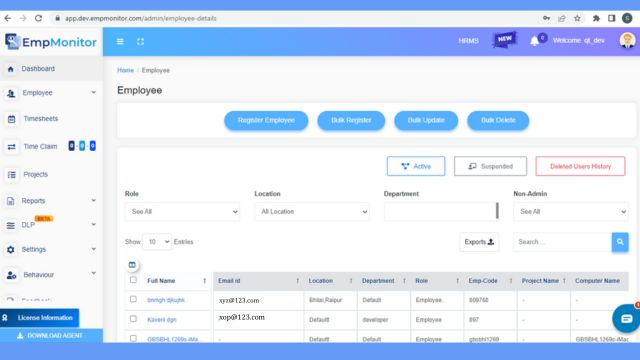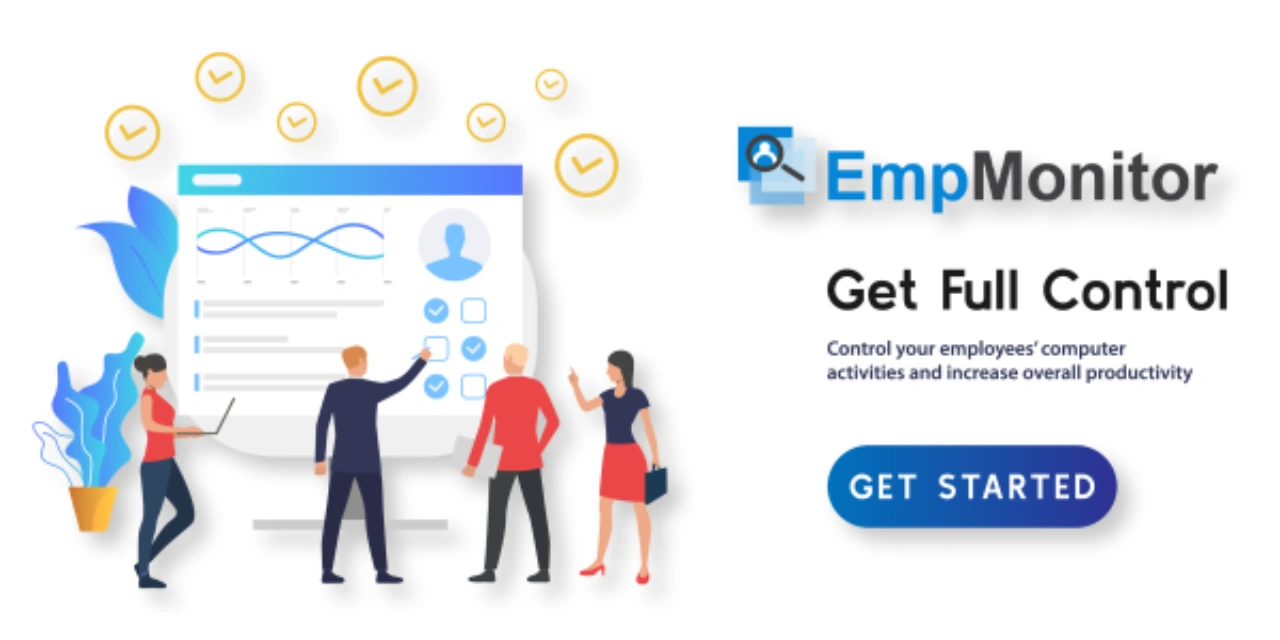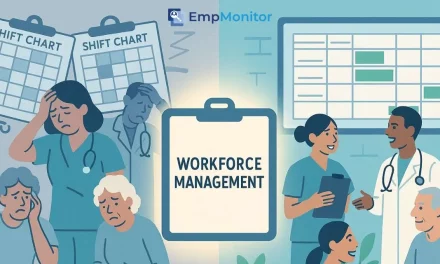Building a team is one thing. Making it work smoothly? That’s the real challenge. Team dynamics decide whether your projects flow like a well-oiled machine or feel like a never-ending struggle. The right mix of skills, communication, and collaboration can take your business to the next level.
So, how do you get it right? How do you create an environment where people trust each other, share ideas, and work towards the same goal? That’s where examples of effective team dynamics come in. From clear roles to open communication, small changes can make a big impact.
In this blog, we’ll share 10 proven strategies for better team dynamics—real, actionable steps that help teams work smarter, not harder. Whether you’re managing a startup or a growing company, these strategies will help you build a team that thrives. Let’s get started!
In a hurry? Listen to the blog instead!
What Is Team Dynamics?
Team dynamics refers to how team members interact and work together. It’s the invisible force that shapes teamwork collaboration, influencing communication, and overall performance. When a team works well together, productivity soars and everyone feels more engaged.
Many factors shape the dynamics of a team—personality traits, work styles, and even company culture. A team with clear roles, mutual respect, and open communication will likely perform better. On the other hand, poor collaboration and misunderstandings can lead to delays, conflicts, and missed goals.
Strong team dynamics examples include teams that encourage idea-sharing, support each other’s strengths, and adapt quickly to challenges. A marketing team brainstorming innovative campaigns or a product team working seamlessly across departments are great examples.
But when dynamics turn negative, things can fall apart. Miscommunication, lack of trust, or unclear roles can slow progress and create tension. That’s why building a positive team environment is essential for success.
Want to improve your team’s performance? Focus on better communication, defined roles, and a culture of trust. When team members work in sync, goals become easier to achieve, and businesses thrive.
Importance of Having a Strong Team Dynamic
A team that works well together gets things done faster and more efficiently. Team dynamics shape how people collaborate, solve problems, and stay motivated. When team members trust each other and communicate openly, work becomes smoother, and goals are easier to achieve.
Here’s why strong dynamics matter:
- Clear alignment – Everyone understands their role, project objectives, and the bigger picture. This keeps the team focused and avoids confusion.
- Open communication – When team members freely discuss ideas and concerns, mistakes are minimized, and solutions come faster.
- Commitment and engagement – A team with high performance team dynamics is one where everyone feels valued and motivated to contribute their best work.
- Optimistic mindset – Challenges are easier to tackle when the team stays positive and supports each other.
- Effective conflict resolution – Instead of avoiding conflicts, strong teams address issues openly and find solutions together.
In businesses, strong dynamics lead to better productivity, happier employees, and stronger results. A team that communicates, collaborates, and adapts well is a team that thrives. Want to build a high-performing team? Start by fostering trust, clarity, and open discussions, while also embracing modern solutions like digital business cards to strengthen connections and enhance collaboration.
Factors That Contribute to Poor Team Dynamics
Strong team dynamics are key to success, but when things go wrong, collaboration suffers. Poor communication, leadership struggles, and individual behaviors can create tension, affecting productivity. Let’s look at the key factors that weaken high performance team dynamics and how they impact workplace efficiency.
1. Weak Leadership
A leader sets the tone for the team. Without clear direction, team members may feel lost, leading to confusion and conflict. In such cases, dominant personalities take over, often pushing personal agendas rather than team goals. This results in a lack of focus and poor decision-making.
2. Fear of Speaking Up
When employees hesitate to share ideas or challenge decisions, innovation suffers. Some team members may remain silent to avoid conflict, while others conform to the leader’s opinions. This fear of disagreement can limit discussions and stop the team from finding the best solutions.
3. Groupthink
In some teams, the pressure to agree is stronger than the drive to make smart choices. Dynamics suffer when critical thinking takes a backseat. Instead of exploring different solutions, members accept ideas just to maintain harmony, leading to missed opportunities and poor results.
4. Poor Communication
Clear communication is the backbone of high-performance team dynamics. When team members interrupt discussions, dismiss others’ ideas, or fail to listen, collaboration breaks down. Misunderstandings increase, and projects stall due to a lack of shared vision.
5. Lack of Accountability
Some employees contribute less, assuming others will carry the workload. These “free riders” reduce overall productivity and create resentment among hardworking team members. When accountability is missing, motivation drops and the team’s efficiency suffers.
6. Fear of Criticism
A workplace where employees worry about judgment can stifle creativity. If team members feel their ideas will be dismissed or criticized, they hesitate to share their thoughts. This fear limits innovation and prevents valuable contributions.
To build high-performance team dynamics, teams need strong leadership, open discussions, and shared responsibility. Addressing these issues leads to better collaboration and greater success.
Read More:
How To Develop High Performing Teams?
How To Improve Teamwork Collaboration – 7+ Strategies
Insourcing Vs Outsourcing: Which Is Better, Differences & More!
How To Improve Cross Team Collaboration?
9 Proven Strategies for Better Team Dynamics With EmpMonitor
Building strong team dynamics is essential for a productive and motivated workforce. However, managing teams efficiently requires more than just good intentions—it needs the right tools. That’s where EmpMonitor, an employee management software, comes in. It helps businesses improve collaboration, monitor productivity, and create a positive work environment.
Here are nine proven strategies to improve team dynamics using EmpMonitor:
1. Set Clear Goals and Expectations
A team performs best when everyone knows their responsibilities. EmpMonitor’s project management feature helps managers assign tasks with clear deadlines and track progress in real-time. This prevents confusion and ensures that every team member knows what is expected of them.
Additionally, EmpMonitor provides real-time reports that help managers analyze work patterns and optimize team performance. With transparent task allocation, teams stay focused and aligned with company objectives.
2. Foster Transparent Communication
Effective dynamics rely on clear communication. OUr employee monitoring software helps managers monitor chats, screenshots, and activity logs to ensure smooth communication among employees.
With EmpMonitor’s insights, managers can identify communication bottlenecks and address them proactively. By fostering an open environment where employees feel heard, teams can collaborate more efficiently and avoid misunderstandings.
3. Monitor Workloads and Prevent Burnout
Uneven workload distribution can lead to stress and reduced productivity. EmpMonitor’s employee activity tracking allows managers to see who is overburdened and who has available capacity.
This feature allows managers to redistribute tasks fairly, ensuring a balanced workload. This not only enhances team dynamics but also prevents burnout, leading to a healthier and more motivated workforce.
4. Encourage Accountability and Productivity
Holding team members accountable is key to strong team dynamics. EmpMonitor’s productivity tracking feature records time spent on tasks, helping managers assess efficiency levels.
With detailed insights into active and idle time, managers can address performance issues early. Employees, knowing that their work is monitored fairly, are more likely to stay productive and committed to their responsibilities.
5. Strengthen Remote and Hybrid Work Collaboration
Managing remote and hybrid teams can be challenging without the right tools. EmpMonitor’s remote employee monitoring provides real-time updates on work progress, ensuring seamless collaboration across different locations.
The software captures screenshot logs, keystrokes, and website tracking, giving managers a clear picture of how remote employees utilize their work hours. This helps in maintaining trust and transparency while working from different locations.
6. Improve Time Management Skills
Poor time management can disrupt team dynamics. EmpMonitor’s automated time tracking helps employees stay mindful of how they spend their work hours.
Managers can use this data to guide employees in improving their time management habits. By setting realistic deadlines and monitoring progress, teams can work more efficiently and meet targets with ease.
7. Ensure Data Security and Compliance
A team cannot function effectively if data security is compromised. EmpMonitor provides insider threat detection, preventing unauthorized access to sensitive information.
By tracking login details, file transfers, and suspicious activities, EmpMonitor ensures that company data remains secure. This builds trust within the team and minimizes risks associated with data breaches.
8. Recognize and Reward Employee Efforts
Recognizing hard work boosts morale and enhances team dynamics. Managers can identify top performers based on actual work data.
Using essential insights, businesses can implement incentive programs and reward employees fairly. This motivates employees to put in their best effort, leading to a more engaged and committed team.
9. Analyze and Improve Team Performance
Continuous improvement is the key to strong team dynamics. EmpMonitor’s detailed reports and analytics allow businesses to track performance trends and make informed decisions.
By identifying areas that need improvement, managers can implement targeted strategies to enhance team efficiency. This data-driven approach ensures long-term success and better workplace harmony.
Build a High-Performing Team
Strong team dynamics lead to better productivity and workplace satisfaction. As an employer, you play a key role in shaping how your team collaborates and performs. Here’s how to create an environment of a high-performing team where employees work efficiently and stay engaged.
Understand Your Team
Before making changes, assess how your team functions. Identifying strengths and weaknesses helps in making informed decisions. Use these methods:
Observe daily interactions. Pay attention to how employees communicate and solve problems.
Schedule one-on-one meetings. Get direct feedback on challenges and expectations.
Consult managers and supervisors. Gain insights from those who oversee day-to-day operations.
Common team challenges include:
Lack of leadership – Without clear direction, employees struggle with priorities.
Overbearing leadership – Employees may hesitate to share ideas if they fear criticism.
Unequal workload – Some employees contribute less, causing frustration among others.
Poor communication – Misunderstandings create tension and reduce efficiency.
Strengthen Team Performance
Once you identify the challenges, implement solutions to build a more effective team.
Address Issues Early
Conflict affects productivity. Encourage open conversations to resolve problems before they escalate. A transparent work culture builds trust and teamwork.
Encourage Collaboration
Employees achieve more when they work together. Assign group projects, promote knowledge sharing, and create opportunities for cross-team interaction. A collaborative environment increases efficiency and morale.
Develop Strong Leaders
Leaders influence team success. Provide leadership training to help managers improve delegation, communication, and decision-making skills. A well-trained leader fosters a productive and motivated team.
Improve Workplace Communication
Clear communication prevents misunderstandings and improves workflow. Encourage open discussions, feedback sessions, and regular check-ins to keep everyone aligned.
Support Team Growth
Every team evolves over time. Recognizing different stages of development helps in guiding employees through challenges. A structured approach to team building leads to long-term success.
A well-managed team delivers better results, stays engaged, and contributes to a positive work culture. By focusing on leadership, collaboration, and communication, you create an environment where employees thrive.
Conclusion
A strong team dynamic is the foundation of a productive and motivated workforce. When teams communicate well, stay organized, and have clear goals, they perform better and achieve more. Tracking performance helps identify strengths and areas for improvement, while collaboration fosters creativity and efficiency.
With EmpMonitor, managing your team becomes effortless. It streamlines workflows, ensures accountability, and boosts overall efficiency. The right tools can transform the way your team works, reducing stress and improving results. Don’t let disorganization hold your team back. Take control, enhance productivity, and build a thriving workplace with EmpMonitor. Start today!
Frequently Asked Questions
Can remote work impact team dynamics?
Yes, remote work changes how teams interact. Without face-to-face communication, misunderstandings can arise, and engagement may drop. However, using project management tools, regular check-ins, and virtual team-building activities can strengthen the remote dynamics of the team, ensuring productivity and collaboration remain high.
How do small teams differ from large teams in dynamics?
Small teams often have stronger communication and closer relationships but may face workload challenges. Large teams offer diverse skills but require structured coordination to avoid confusion. The key to success in both cases is clear roles, effective collaboration, and streamlined processes.
Can competition within a team improve dynamics?
Healthy competition can boost motivation and performance. However, excessive rivalry may create tension and reduce teamwork. Encouraging friendly challenges, setting collective goals, and recognizing individual contributions help maintain a competitive but supportive team environment.

